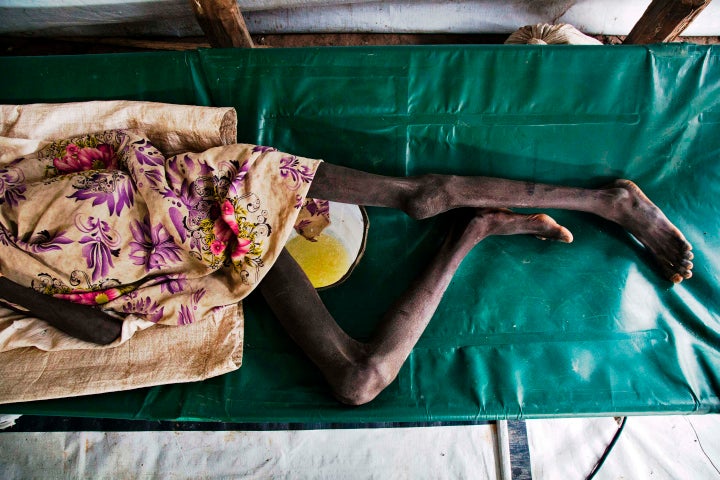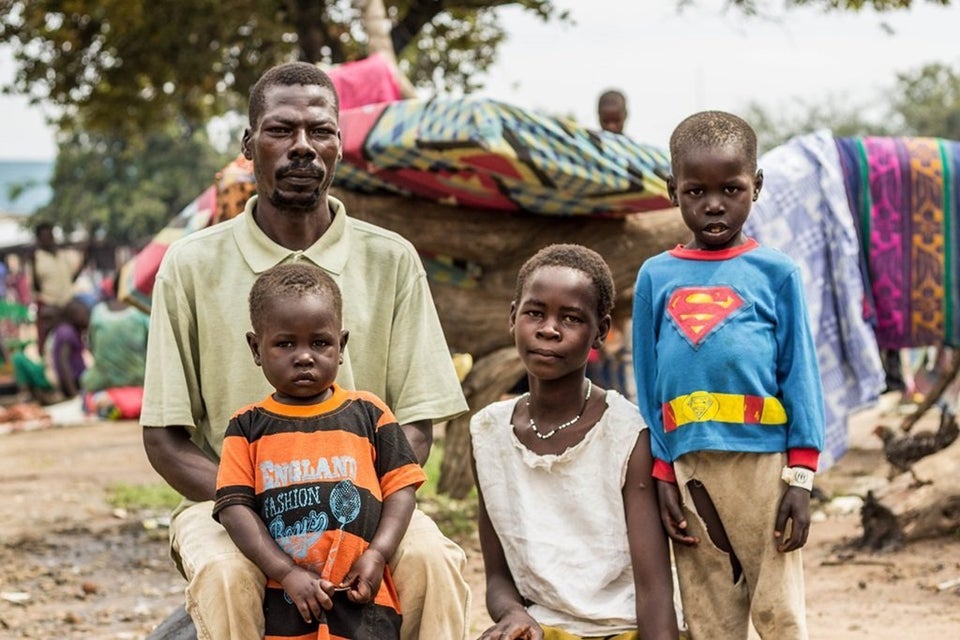
The world’s youngest country turns six on Sunday, as six million South Sudanese people ― more than half the ailing nation’s population ― grapple with extreme food insecurity. Conflict and devastating resource shortages have displaced four million residents ― the majority of whom are children.
Two years after South Sudan gained independence from Sudan in 2011, President Salva Kiir accused his former vice president of plotting a coup against his regime, triggering political violence that quickly consumed the infant nation. A peace deal collapsed last year, and the crisis deteriorated.
Clashes between warring rebel and government forces have expanded into a feud between ethnic groups. The unrest, exacerbated by high-level corruption, is also disrupting farming activity and causing major damage to South Sudan’s vital agriculture industry.
South Sudan’s mass displacement has created the fastest-growing refugee crisis in the world. Almost two million people have fled the country, including nearly one million who have crossed into neighboring Uganda, according to the Norwegian Refugee Council. Another two million are internally displaced.
Sunday’s anniversary bears “little reason to celebrate,” said Rehana Zawar, South Sudan country director for the NRC. “South Sudan’s Independence Day is overshadowed by conflict and an unprecedented food crisis,” she added, warning the country “will likely face a new famine on a greater scale in the coming year if relevant support is not provided.”
In February, the government declared famine in two regions ― the world’s first such declaration since 2012. Targeted humanitarian assistance has improved the situation, but aid is still urgently needed.

South Sudan is also dealing with the worst outbreak of cholera. There have been more than 10,000 infections to date, including thousands of child victims. The disease has killed about 250 people since the first case was reported last June.
Millions of boys and girls in the country are enduring “unthinkable hardships” as the crisis rages on, said Mahimbo Mdoe, a South Sudan representative for the United Nations’ international child welfare agency.
UNICEF data reveals that more than two million South Sudanese youths are not in school ― the world’s highest proportion of children out of school. Just 30 percent receive an education, and more than one-third of all school buildings have been attacked by armed groups.
Over 17,000 kids have been recruited to serve as soldiers, and hundreds have been raped or sexually assaulted, UNICEF reports. More than one million are acutely malnourished.
“A country’s independence day should be celebrated. However, today in South Sudan, there will be no celebration for the millions of children caught up in this conflict,” said Mdoe, noting that at least 2,500 have been killed or injured since the conflict erupted. “The numbers are staggering and yet each represents the ongoing misery of a child.”
To support crisis-afflicted children in South Sudan, you can visit UNICEF’s donation page.

